Task-Based Asynchronous Pattern (TAP) is now the recommended method to create asynchronous code. It executes asynchronously on a thread from the thread pool and does not execute synchronously on the main thread of your application. It allows us to check the task's state by calling the Status property.
We will create a task to read a very large text file. This will be accomplished using an asynchronous Task.
- Create a large text file (we called ours
taskFile.txt) and place it in yourC: empfolder: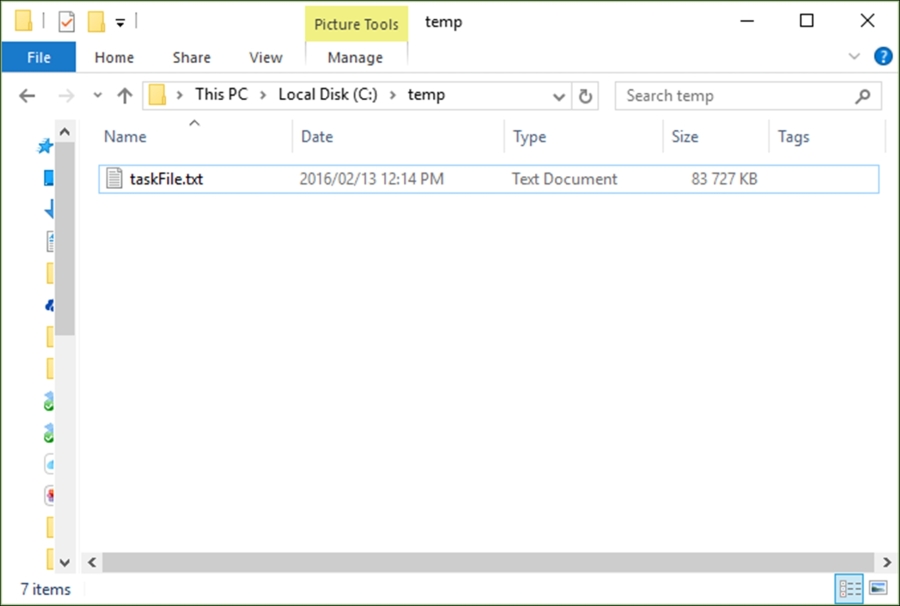
- In the
AsyncDemoclass, create a method calledReadBigFile()that returns aTask<TResult>type, which will be used to return an integer of bytes read from our big text file:public Task<int> ReadBigFile() { } - Add the following code to open and read the file bytes. You will see that we are using the
ReadAsync()method that asynchronously reads a sequence of bytes from the stream and advances the position in that stream by the number of bytes read from that stream. You will also notice that we are using a buffer to read those bytes:public Task<int> ReadBigFile() { var bigFile = File.OpenRead(@"C: emp askFile.txt"); var bigFileBuffer = new byte[bigFile.Length]; var readBytes = bigFile.ReadAsync(bigFileBuffer, 0, (int)bigFile.Length); return readBytes; } - Finally, add the final section of code just after the
var readBytes = bigFile.ReadAsync(bigFileBuffer, 0, (int)bigFile.Length);line that uses a lambda expression to specify the work that the task needs to perform. In this case, it is to read the bytes in the file:public Task<int> ReadBigFile() { var bigFile = File.OpenRead(@"C: emp askFile.txt"); var bigFileBuffer = new byte[bigFile.Length]; var readBytes = bigFile.ReadAsync(bigFileBuffer, 0, (int)bigFile.Length); readBytes.ContinueWith(task => { if (task.Status == TaskStatus.Running) Console.WriteLine("Running"); else if (task.Status == TaskStatus.RanToCompletion) Console.WriteLine("RanToCompletion"); else if (task.Status == TaskStatus.Faulted) Console.WriteLine("Faulted"); bigFile.Dispose(); }); return readBytes; } - If not done so in the previous recipe, add a button to your Windows Forms application's Forms Designer. On the winformAsync form designer, open Toolbox and select the Button control, which is found under the All Windows Forms node:
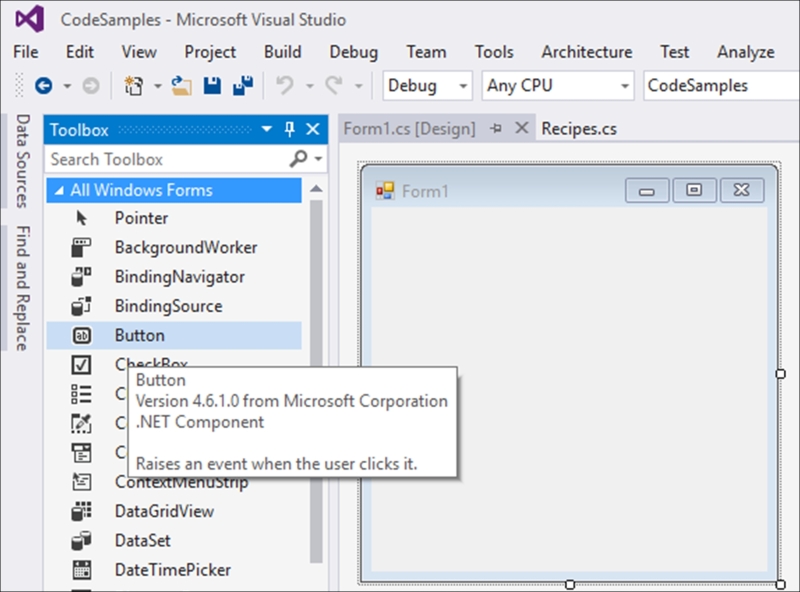
- Drag the button control onto the Form1 designer:

- With the button control selected, double-click the control to create the click event in the code behind. Visual Studio will insert the event code for you:
namespace winformAsync { public partial class Form1 : Form { public Form1() { InitializeComponent(); } private void button1_Click(object sender, EventArgs e) { } } } - Change the
button1_Clickevent and add theasynckeyword to the click event. This is an example of avoidreturning an asynchronous method:private async void button1_Click(object sender, EventArgs e) { } - Now, make sure that you add code to call the
AsyncDemoclass'sReadBigFile()method asynchronously. Remember to read the result from the method (which are the bytes read) into an integer variable:private async void button1_Click(object sender, EventArgs e) { Console.WriteLine("Start file read"); Chapter6.AsyncDemo oAsync = new Chapter6.AsyncDemo(); int readResult = await oAsync.ReadBigFile(); Console.WriteLine("Bytes read = " + readResult); } - Running your application will display the Windows Forms application:
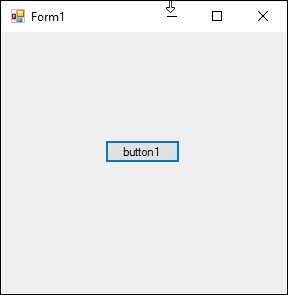
- Before clicking on the button1 button, ensure that the Output window is visible:
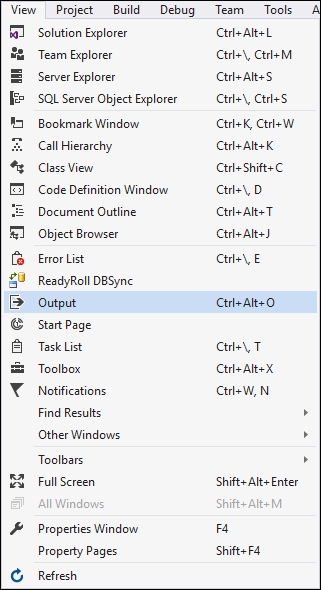
- From the View menu, click on the Output menu item or type Ctrl + Alt + O to display the Output window. This will allow us to see the
Console.Writeline()outputs as we have added them to the code in theChapter6class and in the Windows application. - Clicking on the button1 button will display the outputs in our Output window. Throughout this code execution, the form remains responsive:
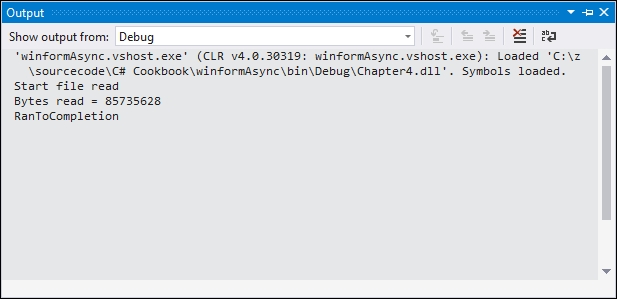
..................Content has been hidden....................
You can't read the all page of ebook, please click here login for view all page.
